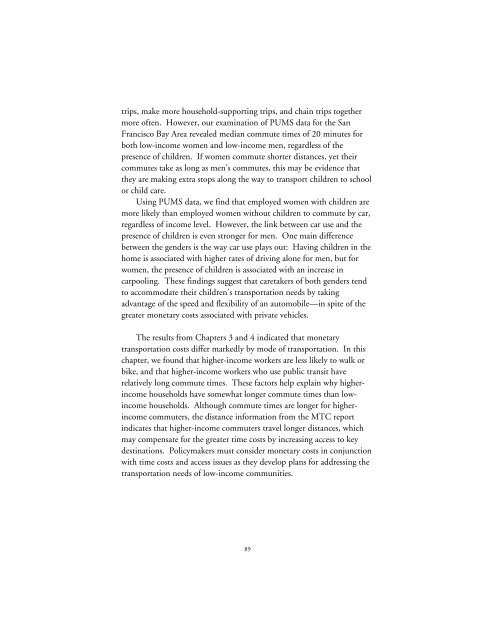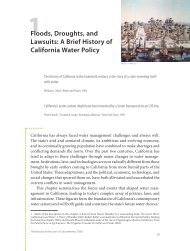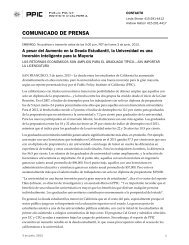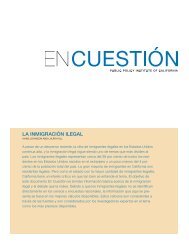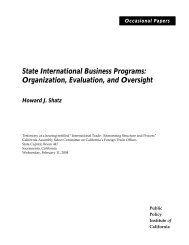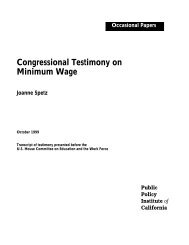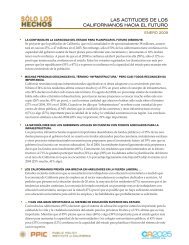Transportation Spending by Low-Income California Households ...
Transportation Spending by Low-Income California Households ...
Transportation Spending by Low-Income California Households ...
You also want an ePaper? Increase the reach of your titles
YUMPU automatically turns print PDFs into web optimized ePapers that Google loves.
trips, make more household-supporting trips, and chain trips together<br />
more often. However, our examination of PUMS data for the San<br />
Francisco Bay Area revealed median commute times of 20 minutes for<br />
both low-income women and low-income men, regardless of the<br />
presence of children. If women commute shorter distances, yet their<br />
commutes take as long as men’s commutes, this may be evidence that<br />
they are making extra stops along the way to transport children to school<br />
or child care.<br />
Using PUMS data, we find that employed women with children are<br />
more likely than employed women without children to commute <strong>by</strong> car,<br />
regardless of income level. However, the link between car use and the<br />
presence of children is even stronger for men. One main difference<br />
between the genders is the way car use plays out: Having children in the<br />
home is associated with higher rates of driving alone for men, but for<br />
women, the presence of children is associated with an increase in<br />
carpooling. These findings suggest that caretakers of both genders tend<br />
to accommodate their children’s transportation needs <strong>by</strong> taking<br />
advantage of the speed and flexibility of an automobile—in spite of the<br />
greater monetary costs associated with private vehicles.<br />
The results from Chapters 3 and 4 indicated that monetary<br />
transportation costs differ markedly <strong>by</strong> mode of transportation. In this<br />
chapter, we found that higher-income workers are less likely to walk or<br />
bike, and that higher-income workers who use public transit have<br />
relatively long commute times. These factors help explain why higherincome<br />
households have somewhat longer commute times than lowincome<br />
households. Although commute times are longer for higherincome<br />
commuters, the distance information from the MTC report<br />
indicates that higher-income commuters travel longer distances, which<br />
may compensate for the greater time costs <strong>by</strong> increasing access to key<br />
destinations. Policymakers must consider monetary costs in conjunction<br />
with time costs and access issues as they develop plans for addressing the<br />
transportation needs of low-income communities.<br />
89


